

 On
our recent Yellowstone
Fall Photo Tour, 2008, wildlife was a bit harder to find
than we have usually experienced, so rather than waste gas and
drive endless miles fruitlessly (as many photographers did), we
had a great deal of fun working landscapes and scenics. Aspens,
with their vivid white bark and interesting black markings, make
compelling images, and we spent some wonderful time working various
aspen groves.
On
our recent Yellowstone
Fall Photo Tour, 2008, wildlife was a bit harder to find
than we have usually experienced, so rather than waste gas and
drive endless miles fruitlessly (as many photographers did), we
had a great deal of fun working landscapes and scenics. Aspens,
with their vivid white bark and interesting black markings, make
compelling images, and we spent some wonderful time working various
aspen groves.
A five minute stop to take a couple of snaps of aspens simply
never happened, as our groups worked the aspen groves, not just
for traditional images but also some very wierd, but rather interesting,
slow shutter speeds that involved using push-pull zooms, camera
movements, and pseudo double exposures. You may not like anything
posted below, or, conversely, your imagination may be stimulated
and you too may be motivated to try something new and different.
Here's how some of these shots were made:

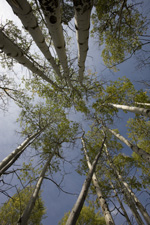
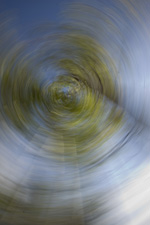
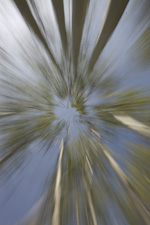
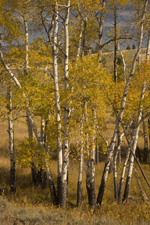

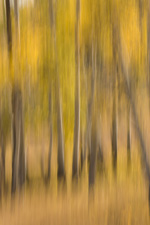

RAW Shooters Beware!
DEC - A solution to the Digital Dilemma
Western Digital portable external Hard Drives
CS3 Upgrade
Framing with a Telephoto Against a Desert Sunrise
Adobe
Photoshop LIGHTROOM
Workflow
and Workload - You Can Keep Ahead
Bring
along a Point N Shoot
Backing Up Your
Digital Files - you'll need more than you think
Action
Wildlife Photography Camera Settings
HELICON FOCUS
Filter maximizing depth of field digitally
Capture 1's
Most Useful Features
DIGITAL
Photographing scenes with extreme exposure values
Effective
Cloning in Adobe CS2
Watch Your Backgrounds
- The potential of composites or shooting in RAW format
DIGITAL
-Shoot for the Future
DIGITAL-Shoot
for the Future, Part II
The
Helicon Focus Filter Revisited
Smell
the Roses
Frankly access your skills before deciding upon a workshop
The Songs of Insects - a super book on katydids, cicadas,
and grasshoppers
A
Great Insect Field Guide
Action
Wildlife Photography Camera Settings
The
Pond-A Must-See shooting Location in southern Arizona
Don't
take in baby wild animals
Seize the Moment!
Take
a Workshop First
Luck, what is it?
At the Pulse
of Life by Fritz Polking
Carry-on
Luggage for small commuter flights
Three
New Products
Two
New Ballheads from Acratech
Lens
Coat equipment covers
The Ultimate
Long Lens Case - McDonald Safari Bag
Positioning your Roll-on
Carry-On bag
New
Lens Covers for Long Lenses
The
Best All-Around Lens
Keep Your Head Up
Save Your Equipment from
Crashing!
The L-Bracket,
the ultimate camera bumper
Visual
Echos Tele-Flash for the 580EX Flash
Testing
your Flash's Aim
The Ultimate
Flash Bracket
Using
TTL flash with Hummingbirds
Specular
highlights and the flashing frog
Geared Focusing Rail
for Macro Work
Shooting
in Inclement Weather
Low
level tripod work
Sighting in a very, very
long lens
Padding
Your WimberleyTripod Head
Using The Wimberley
Gimbal head with a camera body
Wimberley
400 and 600mm IS plate
How
do we protect our gear from dust, and carry our gear when on safari
How do
you shoot the Moon?
If
you see it, it's too late -- a lesson in anticipation
Protecting
your long lens from SAND, the pleasures of beach photography
Maximum
Depth of Field and Hyperfocal Distance - they're not the same
thing!
A
great depth of field guide
Carry Your Gear!
Custom Function 4-1
for Nikon and Canon shooters
Sigma's 120-300 f2.8
APO zoom telephoto lens
A Car
Tip that could Save Your Life
A Great Website for Information
- the Singapore Nature Photography Society
Airline
Carry-On Luggage -Let your concerns be heard!
Ask Questions Before You
Go
Liquids
in your Levels - TSA Warnings!
Disconnect
-- travel precautions
Photograph America
Newsletter
Obey
the Rules
Wildlife
Portraiture
Drying out boots
with newspaper
Removing
Cactus Spines
The
Ti Chi Stalk
Photographing
Critically Endangered Sites
The Sibley
Bird Guides
Contact us by e-mail: info@hoothollow.com
Or FAX us at: (717) 543-6423.